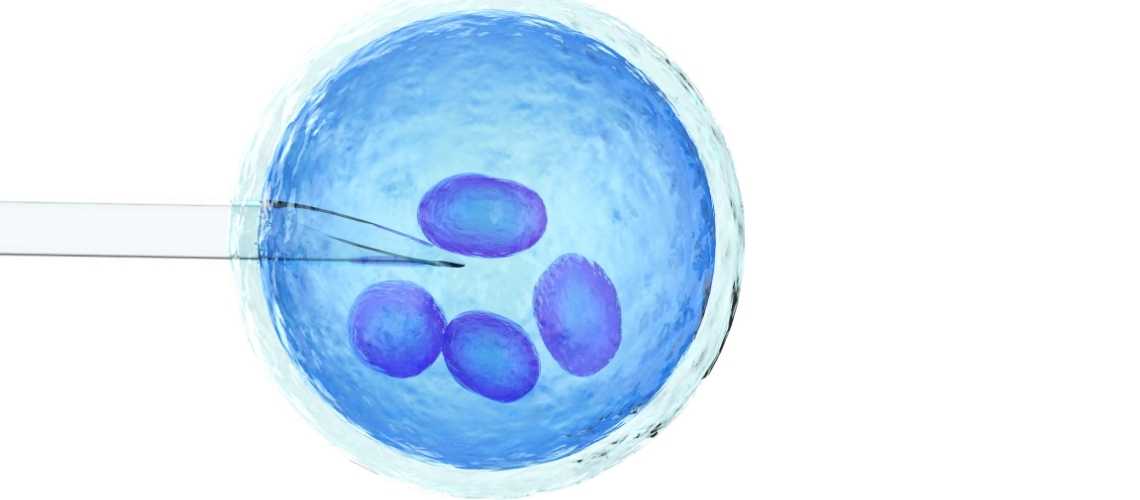For women who have had previous failures and have a poor prognosis for their next IVF cycle, assisted hatching may be a good option to increase the chances of a successful pregnancy.
What is assisted hatching?
Assisted hatching is an additional procedure that can be applied to patients receiving IVF treatment. The zona pellucida, a strong outer layer of cells, surrounds oocytes and therefore the embryos after they are cultured in IVF. This outer layer can be compared to the embryo’s “shell.”
This “shell” must be broken in order for an embryo to implant in the uterus and progress into pregnancy. By making a tiny crack in the zona pellucida, assisted hatching can assist the embryo in “emerging” from its “shell.”
It’s thought that aided hatching may facilitate embryo implantation , increasing the likelihood of pregnancy in some patients. (1)
How does the assisted hatching procedure work?
Generally, on the third day of embryo development, assisted hatching procedure is performed. Embryos that have been previously frozen and thawed may also be subjected to assisted hatching. The zona pellucida is punctured with a tiny laser hole by embryologists. (2)
Can assisted hatching give successful results?
“There is moderate evidence that assisted hatching does not significantly improve live birth rates in fresh assisted reproductive technology cycles and insufficient evidence for the benefit of assisted hatching in patients with poor prognosis or undergoing frozen embryo transfer cycles.”
The role of assisted hatching in in vitro fertilization: a guideline
Practice Committee of the American Society for Reproductive Medicine ∗
DOI:https://doi.org/10.1016/j.fertnstert.2022.02.020
Is assisted hatching safe?
The safety of assisted hatching varies greatly, in part due to the diversity in the application of the technique. A common complication that can occur is the weakening of the wall, potentially damaging the embryo and potentially damaging individual embryonic cells. Due to the possibility that the zona pellucida has thinned overly, there is a loose association with an increased chance of a pregnancy resulting in identical twins. (4)
Who is suitable for assisted hatching?
Numerous factors may make a patient a candidate for assisted hatching with in vitro fertilization. This technique can help patients with past failed IVF cycles, patients with exceptionally thick zona pellucida in their embryos, patients whose embryos do not develop as predicted, patients with high FSH levels in the follicular phase, and patients older than 35.
Advanced assisted hatching procedures are anticipated to produce positive results for all IVF Treatment in Turkey patients because assisted hatching has no known serious drawbacks and the potential to increase implantation rates.
It should be noted, however, that assisted hatching is not recommended for all patients, and is much more effective in women who are generally older (over 37 years old) or with previous IVF failures. (5)
What are the risks of assisted hatching?
There is some danger involved with any alteration or intervention to an embryo. The embryo could sustain lethal damage during assisted hatching, which is a potential risk. Both before and after the embryo transfer, this harm might happen. There won’t be a pregnancy in any scenario.
Ironically, a risk of aided hatching is that it prevents the embryo from naturally hatching, which could result in the embryo not fully emerging from the zona pellucida. However, these are all rather low probabilities.
Does Assisted Hatching increase the chances of twins?
Assisted hatching is a technique employed in IVF to improve the chances of embryo implantation. This process involves creating a small opening in the embryo’s outer layer, known as the zona pellucida. The primary goal is to aid embryos that might struggle to break free naturally, enhancing implantation rates. Consequently, this intervention can lead to a slight increase in the likelihood of twins or higher-order multiples.
- Firstly, the procedure facilitates the embryo’s exit from its protective shell, potentially allowing for the splitting that results in identical twins.
- Secondly, despite the intention to improve implantation rates, this method inadvertently raises the possibility of multiple pregnancies.
Moreover, statistics reveal that the rate of multiple pregnancies might climb to between 5-10% with assisted hatching. This figure contrasts with the 1-2% rate observed in natural conception. Nevertheless, it’s crucial to recognize that this increase remains relatively modest. The primary advantage of assisted hatching continues to be its potential to boost implantation success for single pregnancies in certain cases. Thus, individuals undergoing IVF should consult their healthcare provider to understand the specific risks and benefits of assisted hatching in their unique situation. This personalized approach ensures that each patient receives care tailored to their needs, weighing the slight risk of multiples against the possible benefit of achieving a successful pregnancy.
Source:
Seif, M. M., Edi‐Osagie, E. C., Farquhar, C. M., Hooper, L., Blake, D. A., & McGinlay, P. (2005). Assisted hatching on assisted conception (IVF & ICSI). Cochrane database of systematic reviews, (4).








